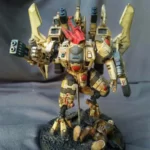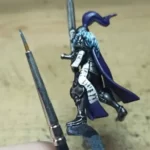Brush sizes for miniature painting (What You REALLY Need)
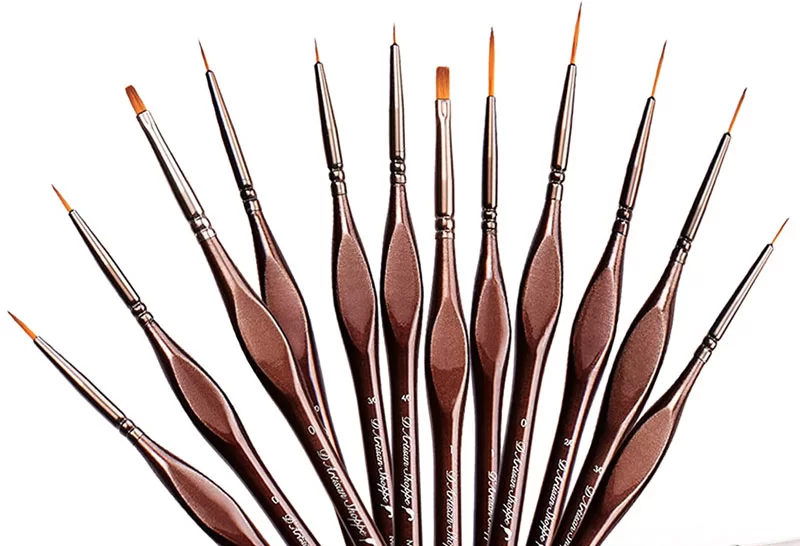
Brush size varies for manufacturers and for bristle type. For this reason, it can be easy to get overwhelmed by the sheer number of options when choosing miniature paintbrushes. So, how do you know which to buy?
Before choosing a paintbrush for your scale models and miniature army, here’s everything you need to know about brush sizes for miniature painting, whether they are synthetic or natural hair.
Why brush size is important for miniature painting
The most important brush size for painting miniatures is size 2 brushes.
A phrase we like to define this brush is “all-weather” because a size 2 brush size does anything from basing to layering and highlighting.
Before you discuss whether you need synthetic bristles or kolinsky sable, choose the right size brush for your job.
What size brushes do You need for miniature painting
A size 0 to 2 brush with a bristle length of 8 to 12mm and a belly diameter of 1.5 to 2mm is best for intricate details, while a size 4 to 7 brush over 15mm long and with a belly diameter of 4 to 4.5mm is ideal for larger areas and base coating.
The size of a miniature paint brush typically ranges from 000 (very small) to 12 (big) and insanely large, 50. So, it can be difficult to know which size of the brush to use for miniature painting.
The better idea is to use the biggest brush you feel comfortable using for any given task. A common size is to use a size 2 or 3 for most “grunt” work and then maybe go down a size for finer details.
Then again, the major drawback to these sizes is that they have no uniformity, from their length to their body, especially as each model in the market is designed by different manufacturers.
A size 0 may be as big as a size 1 from another brand. However, a general way to identify how big or small your brushes are is to check their body.
The number on the side of the paintbrush lets you know how thick, long and wide the brush is. Size 0 to 2 paint brushes have a bristle length between 8 to 12mm and a belly diameter of 1.5 to 2m, while size 4 to 7 brushes are over 15mm long and with a belly diameter between 4 to 4.5mm.
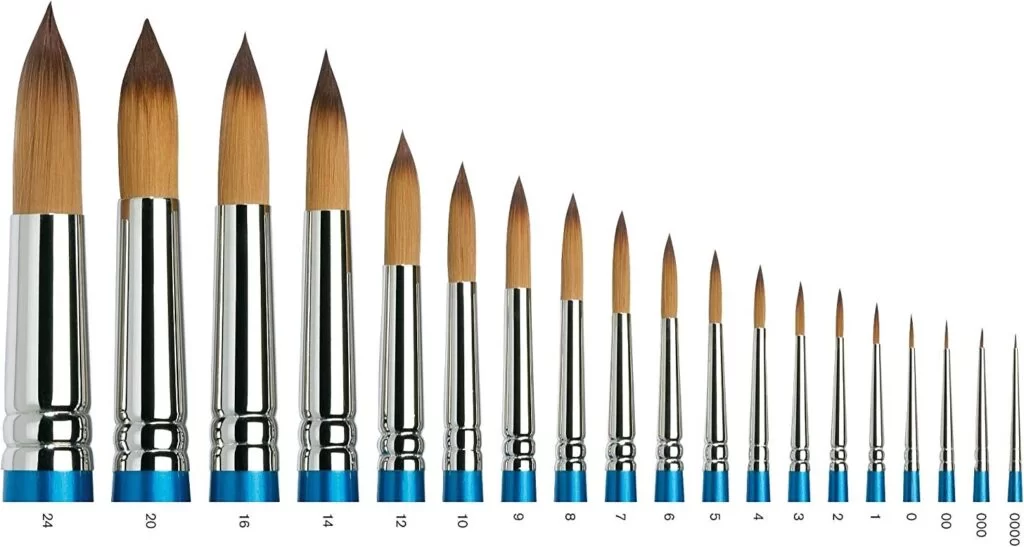

Which brush shape do you need for miniature painting?
When buying a paintbrush for your tabletop gaming miniatures, you also need to consider the shape because it determines how your brushstrokes are made.
The best shape to look out for when painting miniatures is:
- A pointed round shaped brush that helps painters make thick and controlled strokes
- One with a bristle length of about 8-12mm
- Make sure the belle diameter is between 1.5m to 2m
Then again, paintbrushes also have more shapes. They include:
- Flat-ended bristle brushes with rectangular shapes that offer a flat stroke,
- Angled brush, the script, rigger, or liner brush that looks skinny,
- Filbert brush with a curved toe and used mainly for oil and acrylic primers,
- Fan brush that helps with dabbing paints to create texture effects and
- Mop brush used for painting washes.
Which size and shape brush to which task?
The reason each paintbrush has a different size and shape is that they do various tasks. So, if you own a size 0 to 6 brush, the best way you should use them is:
- Size 0: these brushes are small and help make fine details on parts like pupils, eyes, and teeth. They have a small tip but hold paints well.
- Size 1: these brushes are mid-range and work well for highlighting, edge highlighting, and detailing.
- Size 2: this is the main miniature painting brush and a good all-around brush. It helps with basing, layering, and detail work. This brush has a large belly and a narrow tip.
- Size 3: for undercoating cloaks, shields, and bigger surfaces.
- Size 6: for painting large miniatures
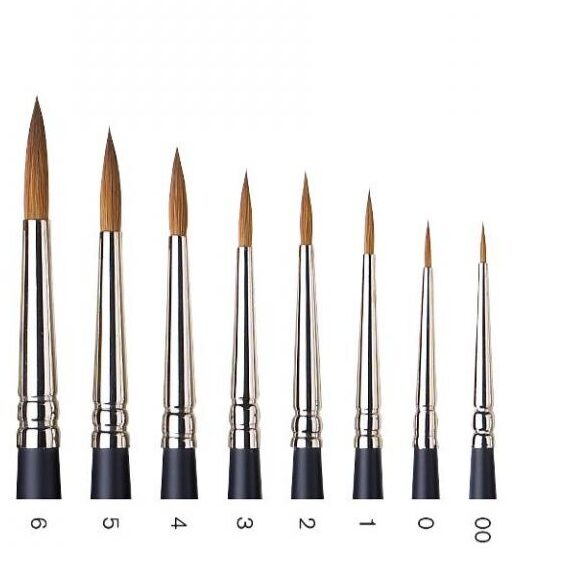

Which brush size is mostly used by mini painters?
A brush size larger than a size 2 often ruins the painting process.
So, most mini painters commonly opt for a size 2, 1, and 0 brush size when painting their miniatures.
The simple reason is that they are small enough to do some detailing and big enough to hold a decent amount of paint.
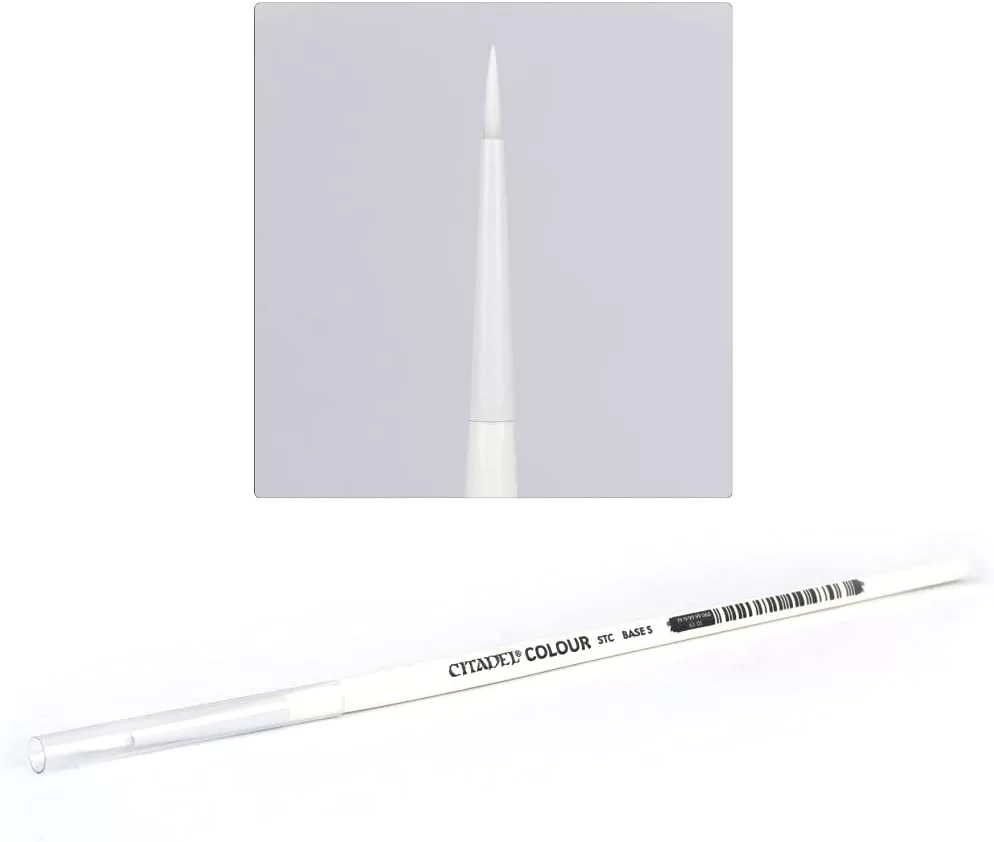

What brush size is a must-have, and what size is not
When buying your paintbrush, you only need size 0, 1, and 2 brushes, as they are small enough to do any painting task but avoid the size 4 and 7 paintbrushes.
You are going to use a size 1 brush 90% off the times on your miniatures and size 2 brushes an average of 10% for small details like eyes.
Anything smaller will be very hard to use, especially with acrylics. Size 3 brushes also work well for undercoating cloaks, shields, and larger surfaces. But, you should seriously drop the size 4 and 7 paintbrushes since they will be a waste of money.
What brush set is good for miniature painting?
Mini painters, especially beginner painters can easily get confused when choosing the right size brush for their miniatures. Besides this, brushes like the kolinsky sable brushes come usually expensive at $20 to $30 per brush.
The best way to overcome these challenges is to get a brush set that has every size you need for painting your miniatures. Some of the favorites we recommend include:
- Artis Opus base set: This is a great starter set as you get #000, #00, #0, and #1 brush sizes.
- Da Vinci’s Maestro Series 10: This brush set is perfect for both beginners and advanced painters because it offers a huge range of sizes from the smallest 0000000000 brush size to a really large #50 brush.
Some other good paint brushes set to consider are the Winsor & Newton Series 7 brushes, the Army Painter’s Wargamer Series brushes, Rosemary & Co – Series 22/33, Artis Opus – Series S Brush Set, and the Raphaël – Series 8404 brush set.
Conclusion
Miniature paint brushes come in different shapes and sizes, with sizes 2, 1, 0, 00, and 000 used mostly by painters.
An advantage of having paint brushes in different sizes is that it helps make detailed works depending on the detail required. Then again, the wrong brush size can easily turn quick work into something that feels impossible – and that’s why we designed this article to help you know about your miniature painting brush sizes.

